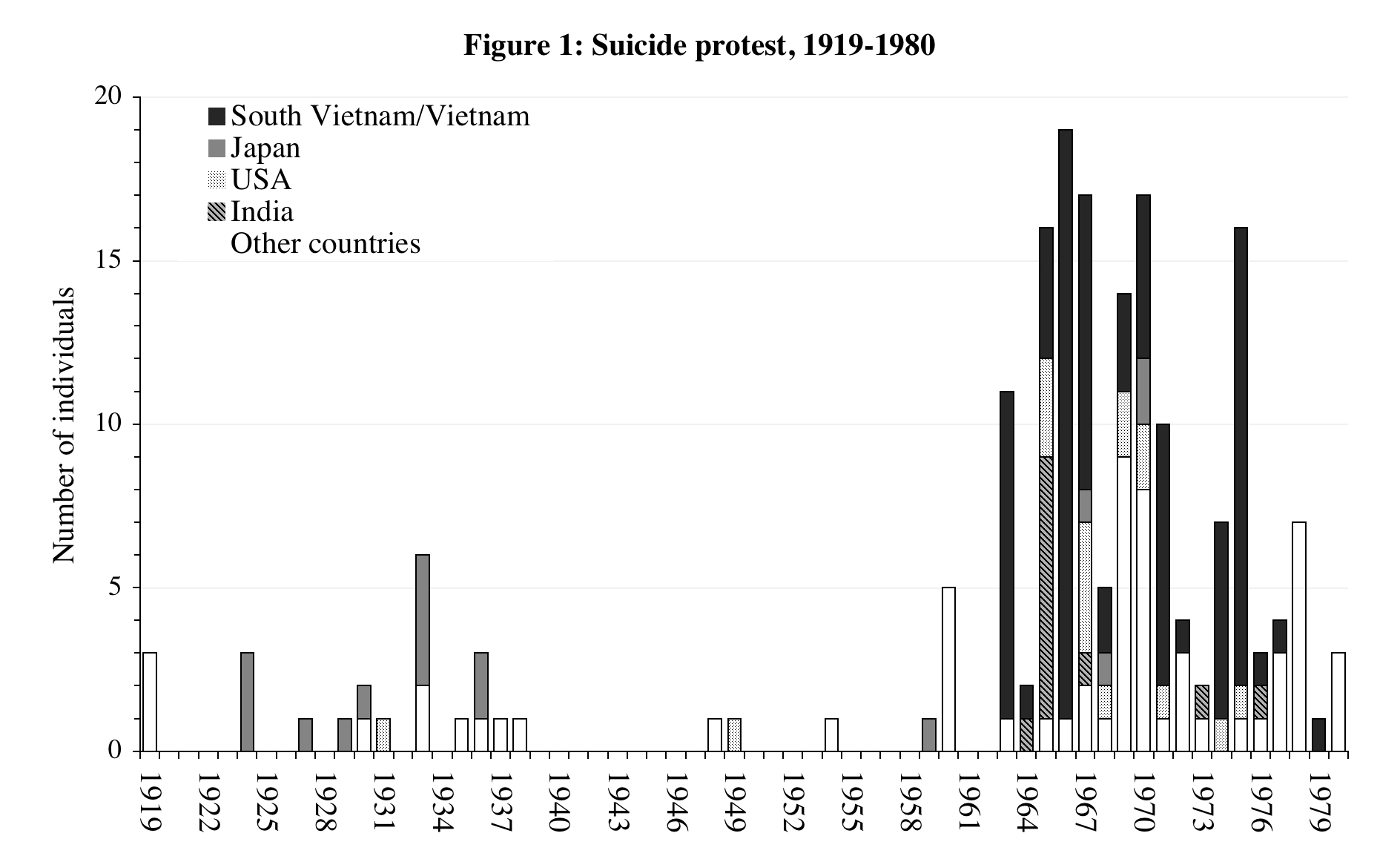
Although "repertoire of contention" is a ubiquitous term in the literature, the concept remains undertheorized and untested. The crucial implication, I argue, is that instances of a tactic belong to one or a few lineages, each radiating from a single invention and comprising a series of adoptions and repetitions. This implication is tested by examining suicide protest: killing oneself, without harming others, for a collective cause. The decline in cruel public punishment and the growth of news media increased the potential utility of this tactic. There were multiple inventions of suicide protest, but only in Japan was there a recognizable lineage in the early twentieth century. The sacrifice of a Vietnamese monk in 1963 created a model, which was adopted in many different countries for varied collective causes.
Almost all subsequent acts can be traced—directly or indirectly—back to this origin.

 Although "repertoire of contention" is a ubiquitous term in the literature, the concept remains undertheorized and untested. The crucial implication, I argue, is that instances of a tactic belong to one or a few lineages, each radiating from a single invention and comprising a series of adoptions and repetitions. This implication is tested by examining suicide protest: killing oneself, without harming others, for a collective cause. The decline in cruel public punishment and the growth of news media increased the potential utility of this tactic. There were multiple inventions of suicide protest, but only in Japan was there a recognizable lineage in the early twentieth century. The sacrifice of a Vietnamese monk in 1963 created a model, which was adopted in many different countries for varied collective causes.
Almost all subsequent acts can be traced—directly or indirectly—back to this origin.
Although "repertoire of contention" is a ubiquitous term in the literature, the concept remains undertheorized and untested. The crucial implication, I argue, is that instances of a tactic belong to one or a few lineages, each radiating from a single invention and comprising a series of adoptions and repetitions. This implication is tested by examining suicide protest: killing oneself, without harming others, for a collective cause. The decline in cruel public punishment and the growth of news media increased the potential utility of this tactic. There were multiple inventions of suicide protest, but only in Japan was there a recognizable lineage in the early twentieth century. The sacrifice of a Vietnamese monk in 1963 created a model, which was adopted in many different countries for varied collective causes.
Almost all subsequent acts can be traced—directly or indirectly—back to this origin.
